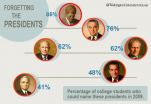Secret of tetanus toxicity offers new way to treat motor neuron disease
The way that tetanus neurotoxin enters nerve cells has been discovered by UCL scientists, opening up a whole new way to treat neurological disorders such as motor neuron disease
2014-11-27
(Press-News.org) The way that tetanus neurotoxin enters nerve cells has been discovered by UCL scientists, who showed that this process can be blocked, offering a potential therapeutic intervention for tetanus. This newly-discovered pathway could be exploited to deliver therapies to the nervous system, opening up a whole new way to treat neurological disorders such as motor neuron disease and peripheral neuropathies.
The research in mice, published in Science and funded by the Medical Research Council, shows that proteins called nidogens that coat cell surfaces are key to tetanus neurotoxin entering the nervous system. Tetanus neurotoxin sticks to nidogens on nerve cell surfaces, and is then 'shuttled' into these nerve cells where it spreads and causes damage across the nervous system.
Although an effective tetanus vaccine is available, no targeted treatments currently exist and until now it was unclear how the toxin entered the nervous system. The latest research not only explains how tetanus neurotoxin is able to enter the nervous system, but also why it is so toxic even in small quantities.
"The nidogen coating around nerve cells acts like fly paper, attracting tetanus neurotoxins to cluster around them," explains first author Kinga Bercsenyi, of the UCL Institute of Neurology and Cancer Research UK London Research Institute. "This explains why tetanus neurotoxin is so poisonous even at low doses, as it largely concentrates around motor neuron terminals, which are surrounded by high levels of nidogens."
The discovery opens up the possibility of delivering drugs into the nervous system by exploiting nidogens in the same way that tetanus does. Similar to virotherapy, a growing field in which modified viruses are used to deliver drugs to specific cells or parts of the body, the latest research offers a new route through which therapies could be delivered.
"Treating neurological disorders is incredibly challenging, and finding a way to get therapies to motor neurons is half the battle," says senior author Professor Giampietro Schiavo from the UCL Institute of Neurology, who led the study. "Now that we understand how tetanus gets in, we hope to mimic the mechanism to deliver advanced therapies.
"There are virotherapy approaches being developed to target motor neurons, but methods that rely on creating new routes into cells can cause damage. Our discovery should complement virotherapy, as protein engineers could design molecular shuttles that bind to and enter motor neurons in the same way as tetanus. The qualities that make tetanus such a powerful neurotoxin could help us to develop targeted treatments for patients with some of the most debilitating and paralysing conditions.
"These results provide a paradigm shift in our understanding on how natural ligands like growth factors and infectious threats such as pathogens access our nervous system. We have now shown that the matrix around neurons plays a major role in cell entry, offering a new route for delivering treatments. This discovery will help us to develop better treatments for motor and sensory neurons that concentrate in the right place, making them more effective at lower doses and reducing side effects."
INFORMATION:
ELSE PRESS RELEASES FROM THIS DATE:
2014-11-27
PITTSBURGH--The rise of social media has seemed like a bonanza for behavioral scientists, who have eagerly tapped the social nets to quickly and cheaply gather huge amounts of data about what people are thinking and doing. But computer scientists at Carnegie Mellon University and McGill University warn that those massive datasets may be misleading.
In a perspective article published in the Nov. 28 issue of the journal Science, Carnegie Mellon's Juergen Pfeffer and McGill's Derek Ruths contend that scientists need to find ways of correcting for the biases inherent in the ...
2014-11-27
Walter and Eliza Hall Institute researchers have defined for the first time how the size of the immune response is controlled, using mathematical models to predict how powerfully immune cells respond to infection and disease.
The finding, published today in the journal Science, has implications for our understanding of how harmful or beneficial immune responses can be manipulated for better health.
The research team used mathematics and computer modeling to understand how complex signaling impacts the size of the response by key infection-fighting immune cells called ...
2014-11-27
Given that some climate change is already unavoidable--as just confirmed by the new IPCC report--investing in empowerment through universal education should be an essential element in climate change adaptation efforts, which so far focus mostly in engineering projects, according to a new study from the International Institute for Applied Systems Analysis (IIASA) published in the journal Science.
The article draws upon extensive analysis of natural disaster data for 167 countries over the past four decades as well as a number of studies carried out in individual countries ...
2014-11-27
Nora Besansky, O'Hara Professor of Biological Sciences at the University of Notre Dame and a member of the University's Eck Institute for Global Health, has led an international team of scientists in sequencing the genomes of 16 Anopheles mosquito species from around the world.
Anopheles mosquitoes are responsible for transmitting human malaria parasites that cause an estimated 200 million cases and more than 600 thousand deaths each year. However, of the almost 500 different Anopheles species, only a few dozen can carry the parasite and only a handful of species are responsible ...
2014-11-27
Certain species of mosquitoes are genetically better at transmitting malaria than even some of their close cousins, according to a multi-institutional team of researchers including Virginia Tech scientists.
Of about 450 different species of mosquitoes in the Anopheles genus, only about 60 can transmit the Plasmodium malaria parasite that is harmful to people. The team chose 16 mosquito species that are currently found in Africa, Asia, Europe, and Latin America, but evolved from the same ancestor approximately 100 million years ago.
Today, the 16 species have varying ...
2014-11-27
A growing number of academic researchers are mining social media data to learn about both online and offline human behavior. In recent years, studies have claimed the ability to predict everything from summer blockbusters to fluctuations in the stock market.
But mounting evidence of flaws in many of these studies points to a need for researchers to be wary of serious pitfalls that arise when working with huge social media data sets, according to computer scientists at McGill University in Montreal and Carnegie Mellon University in Pittsburgh.
Such erroneous results ...
2014-11-27
American presidents spend their time in office trying to carve out a prominent place in the nation's collective memory, but most are destined to be forgotten within 50-to-100 years of their serving as president, suggests a study on presidential name recall released today by the journal Science.
"By the year 2060, Americans will probably remember as much about the 39th and 40th presidents, Jimmy Carter and Ronald Reagan, as they now remember about our 13th president, Millard Fillmore," predicts study co-author Henry L. Roediger III, PhD, a human memory expert at Washington ...
2014-11-27
High-tech genomics and traditional Chinese medicine come together as researchers identify the genes responsible for the intense bitter taste of wild cucumbers. Taming this bitterness made cucumber, pumpkin and their relatives into popular foods, but the same compounds also have potential to treat cancer and diabetes.
"You don't eat wild cucumber, unless you want to use it as a purgative," said William Lucas, professor of plant biology at the University of California, Davis and coauthor on the paper to be published Nov. 28 in the journal Science.
That bitter flavor in ...
2014-11-27
Human-induced changes to Earth's carbon cycle - for example, rising atmospheric carbon dioxide and ocean acidification - have been observed for decades. However, a study published this week in Science showed human activities, in particular industrial and agricultural processes, have also had significant impacts on the upper ocean nitrogen cycle.
The rate of deposition of reactive nitrogen (i.e., nitrogen oxides from fossil fuel burning and ammonia compounds from fertilizer use) from the atmosphere to the open ocean has more than doubled globally over the last 100 years. ...
2014-11-27
MEDFORD/SOMERVILLE, Mass.(November 27, 2014, 2 PM) -- New catalysts designed and investigated by Tufts University School of Engineering researchers and collaborators from other university and national laboratories have the potential to greatly reduce processing costs in future fuels, such as hydrogen. The catalysts are composed of a unique structure of single gold atoms bound by oxygen to several sodium or potassium atoms and supported on non-reactive silica materials. They demonstrate comparable activity and stability with catalysts comprising precious metal nanoparticles ...
LAST 30 PRESS RELEASES:
[Press-News.org] Secret of tetanus toxicity offers new way to treat motor neuron disease
The way that tetanus neurotoxin enters nerve cells has been discovered by UCL scientists, opening up a whole new way to treat neurological disorders such as motor neuron disease


